5 top tips on how to choose the best plants for your garden
Here are 5 top insider tips on how to choose the best plants for your garden.
I visited multi-award winning nursery, Hardy’s Cottage Garden Plants to ask Rosy Hardy what the experts look for when they’re buying plants.
Rosy also has a YouTube channel all about plants, Rosy Hardy Gardening.
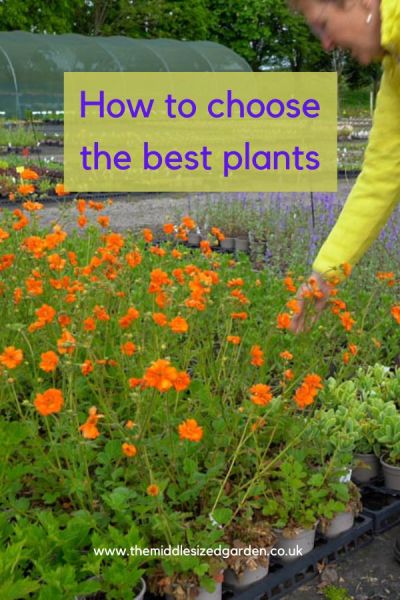
Award-winning plant grower Rosy Hardy tells you how to choose the best plants for your garden
You can see the interview with Rosy Hardy in the video here.
Choose the best plants by looking at the base
‘Everyone is always drawn in by the colour of the flowers,’ says Rosy.
‘But it’s more important to look for strong, healthy growth at the base of the plant. There should be a bit of root coming out of the bottom, showing that it’s not a smaller plant that’s just been planted into a bigger pot.’
(My post on how to cut the cost of planting a border got several comments from people who worked in nurseries, saying that some ‘2L’ plants are really 9cm plants in 2L pots!)
And Rosy added that if you know you’re going to a reputable nursery, where you can rely on good labelling and plant quality, then you can buy plants that are still in bud.
Otherwise, buying plants that are already in flower mean that you know what you’re getting.
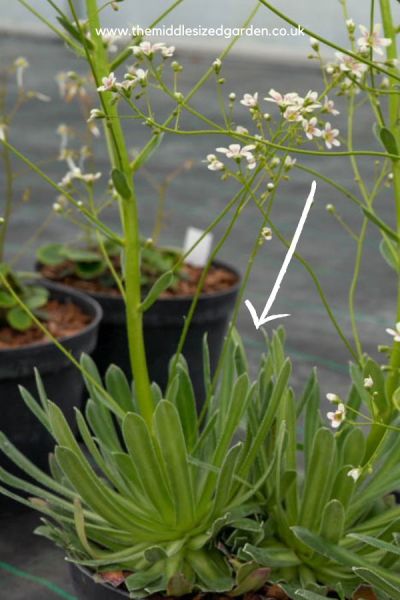
Look at the plant’s base foliage to see if it’s healthy!
Make sure you know how much sun or shade the plant needs
You need to know how much sun or shade your border has, says Rosy. ‘A west-facing border is the easiest place to grow plants because you have plenty of light, but it’s gentle.’
If your border is sunny or shady, make sure you buy plants that want to grow in sunny or shady positions!
And what’s your soil like? If you have very sandy soil or very heavy clay soil, for example, then there are specific plants that are best for that kind of soil.
That’s one of the reasons why it’s a good idea to buy plants grown in a nursery near you rather than plants which have been mass-produced in pots a long way away.
And if you buy from a local nursery, you’ll also be able to ask more about the plants. The people working there are usually very knowledgeable about the plants they sell and grow.
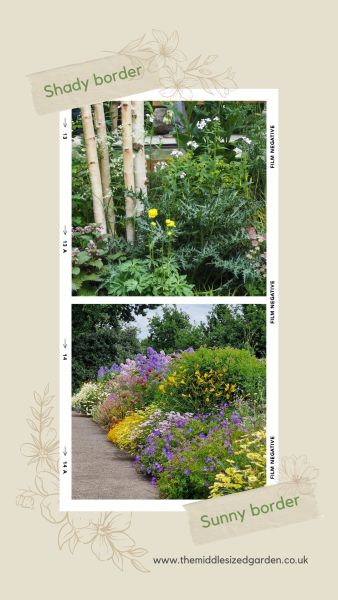
Check whether your border is sunny or shady.
Find out when the plant flowers and how long it flowers for
Some flowers will flower for months on end (see this post on 6 perennials that flower all summer for good examples.) However, their flowering may be intermittent at times.
Other flowers have a big blast of flowering at a particular time.
If you choose the best plants for a big burst of flowering at a specific time, says Rosy, then ask yourself ‘what’s going to follow on from that?’
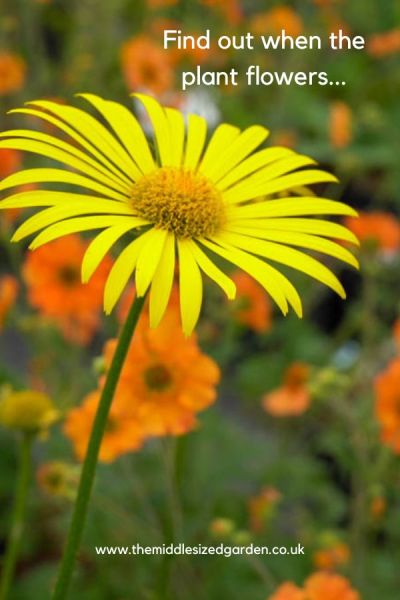
Find out when the plant flowers and how long it flowers for. Plan what will happen after that.
Contrast flower and foliage shapes
Rosy says that if you have a whole border full of the same shaped flowers, then it will look slightly dull – however pretty the flowers themselves are.
‘When you buy plants, look for contrast. For example, pair a round flower with a spire,’ she says. Plant a clump of plants with rounded flowers or leaves with a group of spiky plants.
And you can plant taller plants at the front. You don’t need to stick to the traditional way of creating a border with bigger plants at the back, medium-sized ones in the middle and smaller ones at the front.’
A plant like Verbena bonariensis, for example, has vivid lavender-coloured flowers on top of a tall, wispy stem. If you plant it at the front of a border, you can see through it to the plants behind. This is what Rosy calls ‘see-through plants.’
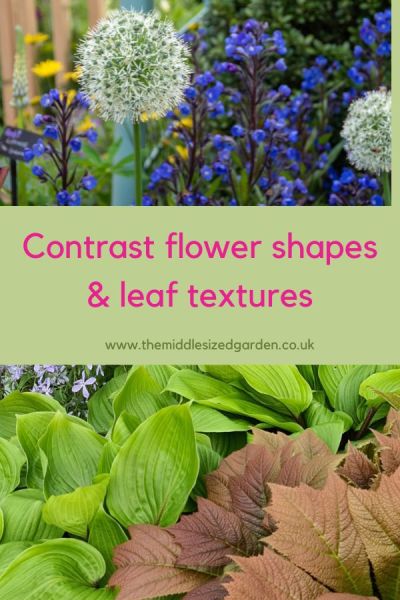
Choose plants which have contrasting leaf or flower shapes, textures or colours.
Choose the best plants – then plant them well!
Firstly, check the label to see how wide the plant will grow. It needs to have that much space allotted to it in the border.
If you don’t have that information, Rosy suggests you hold two plants in either hand, approximately shoulder-width apart. That spacing should be fine for most perennials.
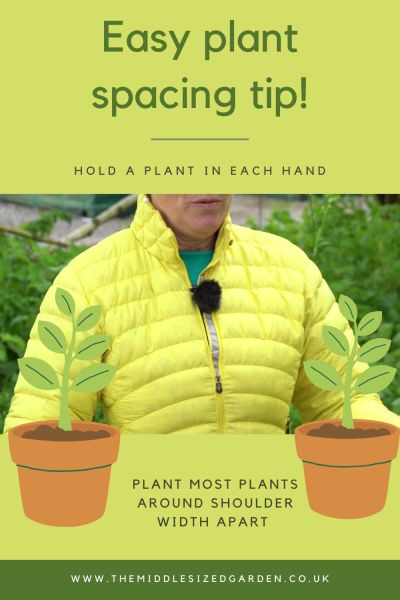
If you don’t have a tape measure, then plant most perennials around shoulder-width apart. Fill in the gaps with annuals or biennials because they won’t compete for space in the same way.
These perennials will take 1-3 years to fill their allotted space. But you don’t need to have bare earth. Rosie says you can plant annuals and biennials to fill the gaps.
To clarify – a perennial is a plant that stays in your border for three years or more.
An annual is a plant that grows from seed, flowers and dies in one year. A biennial does the same in 2 years.
Annuals and biennials won’t compete with the perennials because they will die off anyway. So you can add annuals and biennials to fill the gaps between the perennials while they grow.
Good annuals for borders include cosmos, snapdragons, marigolds and cleomes. Good biennials include foxgloves and wallflowers.
Pin to remember how to choose the best plants
And do join us! See here for a free weekly email with more gardening tips, ideas and inspiration.
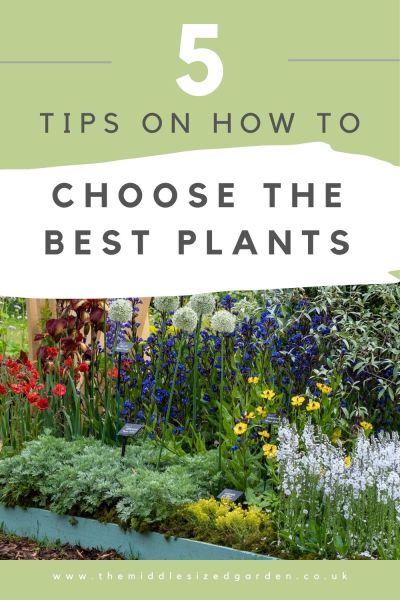
























Do you advise on the best plants to put in a garden if I give you full details of my front garden ,where it is and what it looks like at present? I can also send a photo by email. NK
That’s a job for a garden designer – I’m a journalist who covers garden design, plants and lots of other aspects of gardening, but I don’t do garden design commissions (and I’m not qualified to). You can look up garden designers near you online and there should be a good range to choose from. You may think ‘oh, it’s just plants, not garden design’ but a qualified garden designer is absolutely the best person to recommend plants for a specific area and how to put them together beautifully. Some garden designers only do whole garden commissions, but many others do plans for borders or plant plans for specific areas. Good luck with finding the right help.